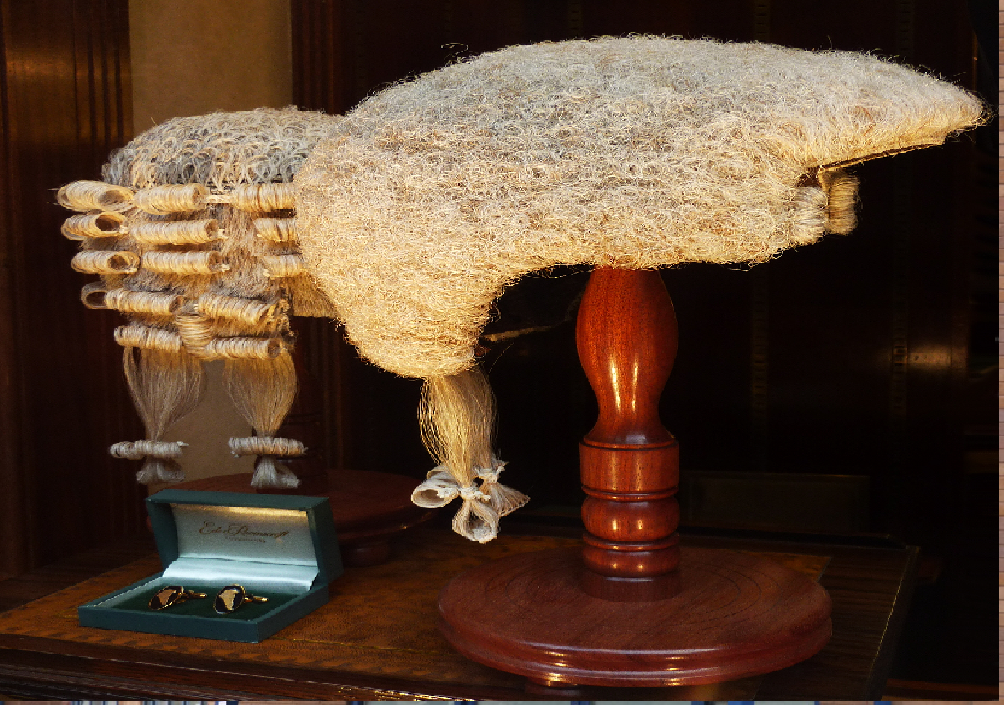‘It is helpful to wear the uniform’: Barrister’s wig enjoys surprising popularity

February 16 (Guardian): The justice secretary, Robert Buckland, is animated about the conduct of some lawyers, and what he intends to do about it. Invited by the Daily Mail this week to give his views on the immigration system, Buckland said he intended to bring in reforms to stop the public “being taken for a ride” by lawyers bringing challenges to prevent the last-minute deportation of their clients.
Taking on “activist lawyers” is one thing, but it was on another subject that Buckland became particularly heated. No, he told the newspaper, it was not time to phase out the wearing of wigs in court. Or as he put it: “Never, never, never. I make no apology for it, and it will never happen on my watch.”
With much in the justice system demanding urgent attention, from the longrunning crisis in legal funding to plummeting rates of rape convictions to an enormous backlog of cases due to Covid, Buckland’s animation on the subject of barristers’ dress may raise eyebrows.
Lawyers across the various legal jurisdictions of the UK have worn gowns and wigs since at least the 17th century, with their use being formalised in English common law in the 1840s. Stiff white horsehair wigs are certainly anachronistic and to outsiders frequently baffling.
For that reason, solicitors in England abandoned wearing wigs in the 1820s and many courts have done the same, from the civil and family courts more than a decade ago, to the UK supreme court in 2011, to the Scottish court of session three years later.
But for those lawyers who continue to wear wigs, including criminal barristers and others at trial or in the court of appeal, there is little enthusiasm to change the status quo, according to James Mulholland QC, a senior barrister with more than 30 years’ experience, and the chair of the Criminal Bar Association.
“The wig is a very important part of the criminal justice system,” he says, “because barristers are independent lawyers fighting for an individual and putting their case forward. They have no personal interest in the case. The wig emphasises their anonymity, their separation, their distancing.”
John McNamara, who specialises in defending criminal cases, agreed, saying that wearing a wig is generally popular even among his younger peers.
“I’m probably the first to acknowledge they are a bizarre thing, when you look at every other job. But I’m very in favour of them.”
Wigs bring a solemnity to proceedings, he says, and “as a younger barrister, it certainly helps level the playing field. If you’re against someone who has more experience, you feel that with both of you wearing wigs and gowns, your physical appearance doesn’t matter as much, because you’re recognised by the judge and jury as being qualified to deal with the case.”
They can become very uncomfortable in a hot courtroom and are awkward to carry everywhere, he says. But when he first meets a client, he likes to be wearing his wig and gown, “because I feel that it gives them a sense that I’m a professional doing the job, in the same way that you have reassurance with a doctor with a stethoscope”.
To Zoe Chapman, a barrister at Red Lion Chambers, wearing a wig has occasionally been helpful in ensuring she is recognised, “and I know some of my BAME colleagues report being repeatedly mistaken for the defendant, for example, at court.
“If you don’t meet the physical stereotypes of a barrister – male, white, perhaps older – it is helpful to wear the uniform because it stops any awkward conversations.”
On the other hand, she says: “They are rather ridiculous and perhaps contribute to an impression that the law, the legal system, is out of date. I don’t share the lord chancellor’s passion for a 17th-century piece of horsehair.”
While the subject of barristers’ dress comes up for debate periodically, says Mulholland, there are other, more urgent topics for the government to be discussing.
“We have a system that has crumbled due to lack of investment. We need now to have sustained reinvestment in the criminal justice system. So that, once again, we have a justice system of which we are truly proud.
“The wig always was a manifestation of that justice system but I’m afraid retaining the wig on its own will not be sufficient. It needs to be the wig and a considerable amount of money in the system. That is the answer.” — The Guardian
Sign up for our weekly newsletter to stay up to date on our product, events featured blog, special offer and all of the exciting things that take place here at Legitquest.




Add a Comment